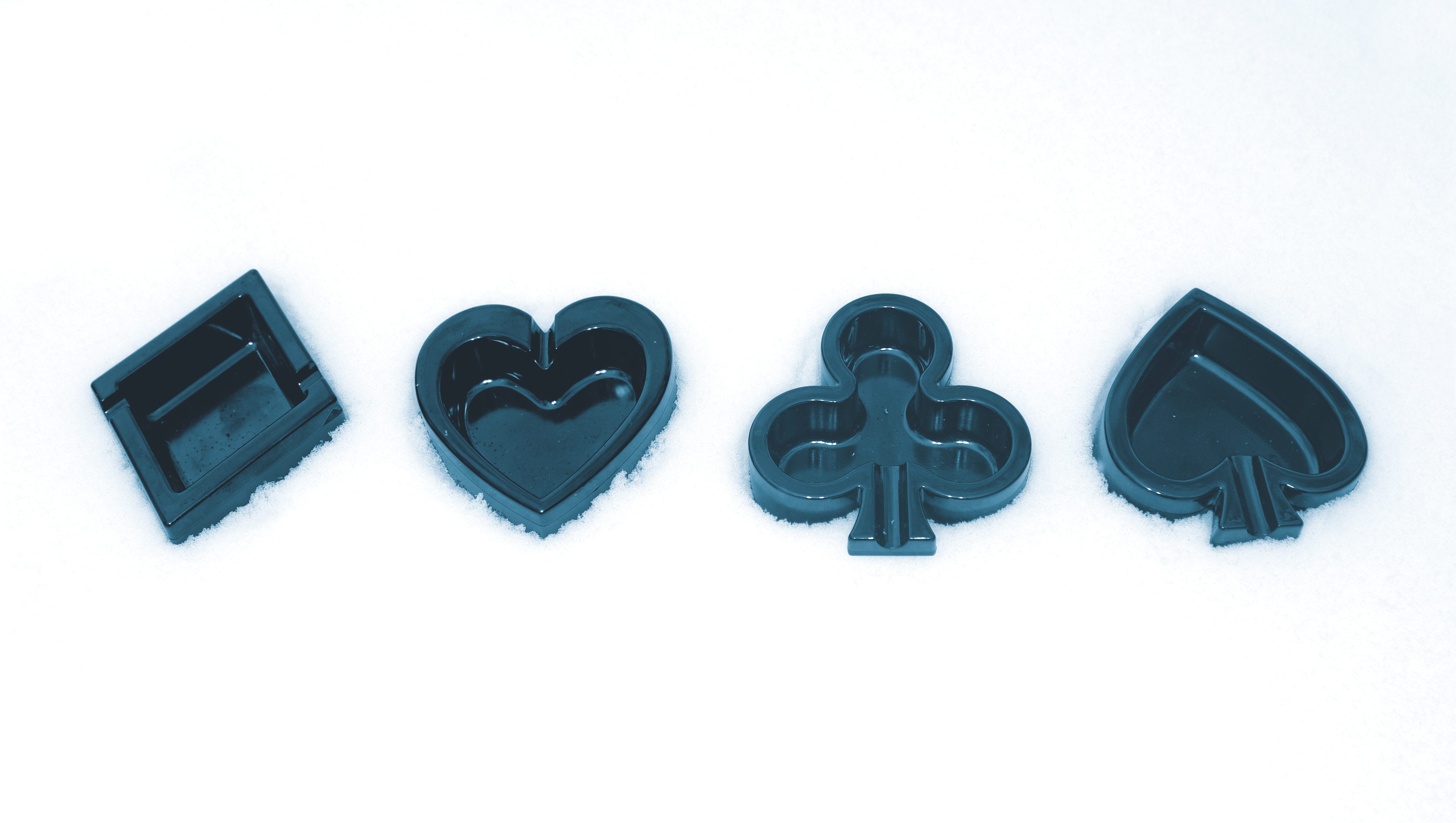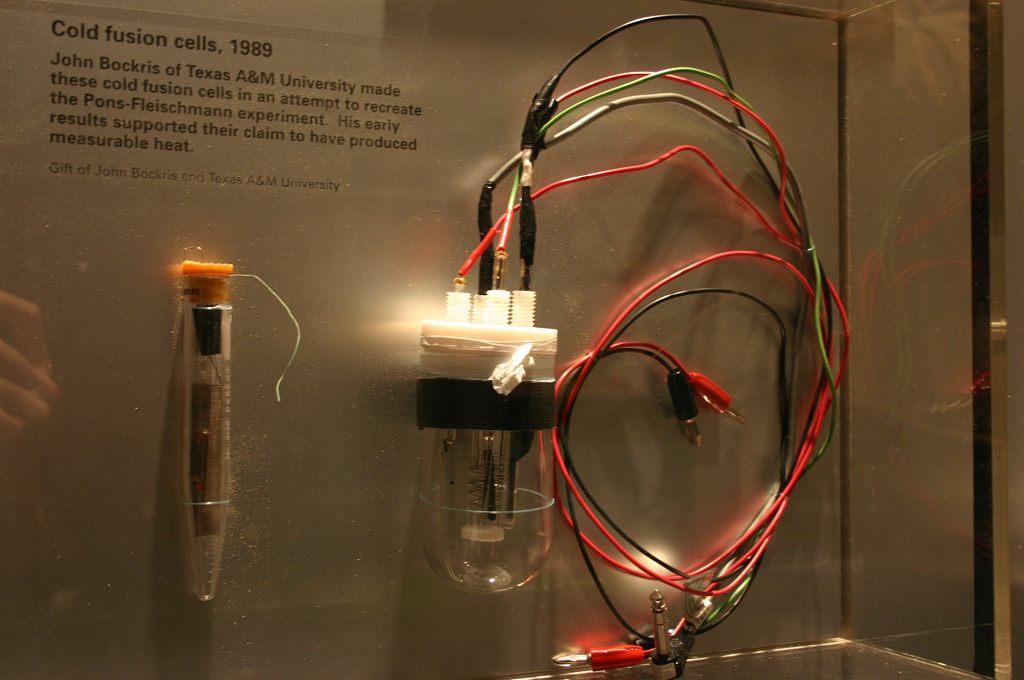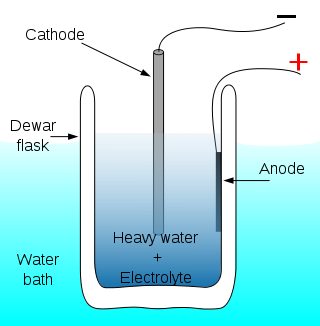How To: Cheat Nuclear Fusion
 (Photo: gadri/shutterstock.com)
(Photo: gadri/shutterstock.com)
Nuclear fusion could be one of the most productive sources of energy known to man thanks to the nearly endless amount of power that is produced in the fusing of atomic particles. If we could harness its power without, say, creating a star or detonating a bomb, that’d be great.
And for a brief period in the early 1990s, it seemed like there might be a way to make the impossible happen.
 (Photo: Ryan Somma/Flickr)
(Photo: Ryan Somma/Flickr)

In the most basic terms, nuclear fusion occurs when the nuclei of two atoms crash together, forming a new type of nucleus, often releasing excess energy in the process. These atomic collisions are the source of power in main sequence stars such as our very own sun. Which is all well and good, except creating a star on Earth is not only dangerous but also not very easy. Nuclear fusion requires a great deal of energy just to occur, such as the naturally occurring, millions of degrees hot atomsmashers at the heart of every star. There has to be a better way!
Enter respected scientists, Stanley Pons (of the University of Utah) and Martin Fleischmann (of the University of Southampton), who in 1989 claimed that they had found a way to create so-called “cold fusion” using a homemade reactor that could fit on the kitchen counter. According to the research they released, which nearly instantly garnered international media attention, all that was needed were some somewhat basic chemical components and a bit of electricity. Pons and Fleischmann’s cold fusion worked by placing a rod of palladium (a rare element from the platinum family) in a beaker of heavy water, then applying an electrical current to the liquid. According to Pons and Fleischman, after a time, the water would heat up, then cool down, then heat up again a few times before the “cell” went dormant. They claimed that the energy being put out via heat was not only greater than the electric current being introduced, but that the reaction was the result of a cheap, clean, and safe form of nuclear fusion.
 (Photo: NASA/Wikipedia)
(Photo: NASA/Wikipedia)
Their discovery hit the scene like a hydrogen bomb (which also produced nuclear fusion). Pons and Fleischmann leaned into the attention, claiming that their discovery would solve the planet’s energy needs in a cold flash, all while being environmentally sound. It all sounded too good to be true. Which it was.
Researchers around the world immediately tried to replicate Pons and Fleischmann’s findings, with little to no success. The heat reactions the two scientists claimed to have found were, by their own admission, somewhat random. Scientists around the globe who tried and failed to recreate cold fusion began to accuse Pons and Fleischmann of sloppy science, reasoning that their palladium was somehow contaminated, or wondering if their claims had ever been real in the first place.
 (Photo: pbroks/Wikipedia)
(Photo: pbroks/Wikipedia)
With the speed of an atomic explosion, Pons and Fleischmann’s cold fusion theories were reduced to raving quackery. The pair had released their findings in March of 1989, and by the end of April, most media outlets were calling the whole thing a fiasco, the New York Times running a piece entitled, “The Utah Fusion Circus.” Federal funding for a planned center to study cold fusion was canceled, and the duo became the poster boys for pathological science, studies that somehow find false results based on a desire for things to be so, than on any facts.
Pons and Fleischmann left the U.S. in 1991 to continue their research in Europe, but their miraculous cold fusion reactor still never materialized.
Nonetheless, research into the process continues to this day. The study of Pons and Fleischmann’s process and similar approaches are no longer politely referred to as cold fusion, preferring more scientific terms like low-energy nuclear reactions (LENR) and Anomalous Heat Effect (AHE), that distance the research from the stigma of bad science.
While no miraculous cold fusion device has yet been definitively proven to work, the dream of cheating physics, of finding a backdoor to a seemingly unattainable process, is still alive and well. Maybe one day, Pons and Fleischmann will be proven right, and all of our energy needs will be wiped away, but until then we can still look forward to the ultimate way to cheat our way into usable nuclear fusion, creating a fake star.
Corrections: Previously the article stated that palladium was a form of platinum, which has been changed to reflect that it is simply in the platinum family. Also the piece previously stated that we have only rarely achieved nuclear fusion. The wording has been softened to reflect that while we have achieved fusion, we have yet to have a usable net gain in energy,















Follow us on Twitter to get the latest on the world's hidden wonders.
Like us on Facebook to get the latest on the world's hidden wonders.
Follow us on Twitter Like us on Facebook